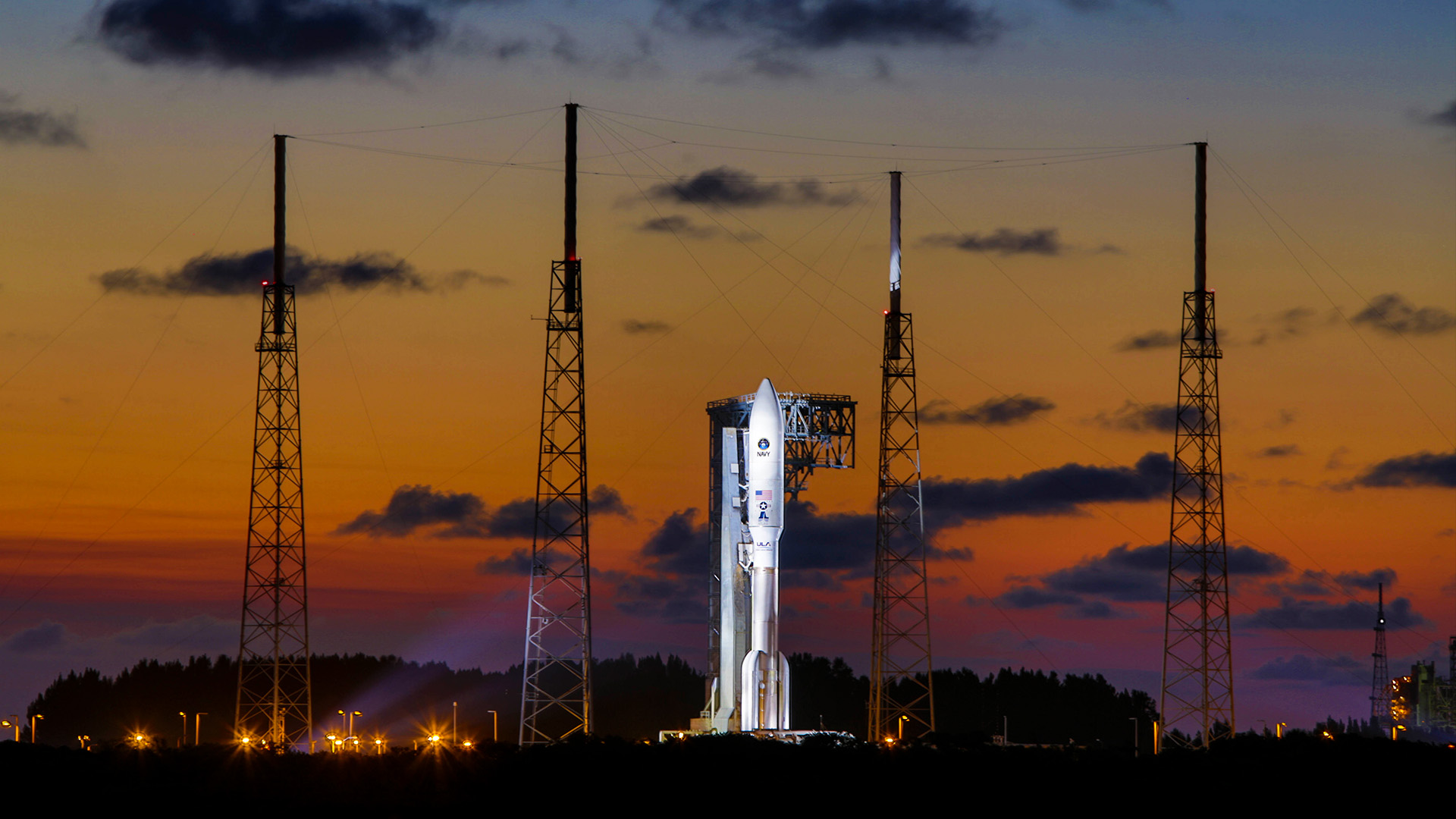News Archive
United Launch Alliance Successfully Launches Juno Spacecraft on Five-Year Journey to Study Jupiter
Atlas V Juno Mission Booklet
Cape Canaveral AFS, Fla., (Aug. 5, 2011) - A United Launch Alliance Atlas V rocket carrying the Juno spacecraft for NASA lifted off from Space Launch Complex-41 here at 12:25 p.m. EDT today.
“Congratulations to the entire team for successfully launching Juno on its five-year interplanetary journey to Jupiter,” said Jim Sponnick, ULA vice president, Mission Operations. “The ULA team is very proud to serve a critical role in delivering one-of-a-kind NASA payloads in support of the global science community and we look forward to the scientific discoveries from the Juno mission.”
The launch of the Juno mission marks the second of five NASA missions scheduled to launch this year on ULA vehicles within a six month timeframe. “This six-month launch campaign for NASA is unprecedented not only for its reach across our solar system, but also for the tempo and precision required together with our NASA Launch Services Program customer and their mission customers in order to achieve successful execution,” said Sponnick.
This mission was launched aboard an Atlas V 551 vehicle configuration, which includes a 5-meter diameter RUAG Space payload fairing. The booster for this mission was powered by the RD AMROSS RD-180 engine along with five Aerojet solid rocket motors. The Centaur upper stage was powered by a single Pratt & Whitney Rocketdyne RL-10A engine.
Juno will improve our understanding of our solar system’s beginnings by revealing the origin and evolution of Jupiter. After a five-year journey, Juno will spend a year and 33 orbits studying many scientific aspects of the largest planet in our solar system. Specifically, Juno will determine how much water is in the atmosphere, measure composition, temperature and cloud motions, map the magnetic and gravity fields, as well as explore and study Jupiter’s magnetosphere.
ULA's next launch is the Delta II GRAIL mission for NASA currently scheduled for Sept. 8, 2011 from Space Launch Complex-17 at Cape Canaveral Air Force Station, Fla. Following the GRAIL launch, ULA is scheduled to launch another Delta II in October with an advanced weather satellite and then an Atlas V in November with the Mars Science Laboratory, both for NASA.
ULA program management, engineering, test and mission support functions are headquartered in Denver, Colo. Manufacturing, assembly and integration operations are located at Decatur, Ala., Harlingen, Texas, San Diego, Calif. Launch operations are located at Cape Canaveral AFS, Fla., and Vandenberg AFB, Calif.
For more information on ULA, visit the ULA Web site at www.ulalaunch.com, or call the ULA Launch Hotline at 1-877-ULA-4321 (852-4321).
Contact:
Jessica Rye, (321) 730-5646 (Office), (321) 693-6250 (Cell) jessica.f.rye@ulalanch.com
United Launch Alliance Successfully Launches Juno Spacecraft on Five-Year Journey to Study Jupiter
Atlas V Juno Mission Booklet
Cape Canaveral AFS, Fla., (Aug. 5, 2011) - A United Launch Alliance Atlas V rocket carrying the Juno spacecraft for NASA lifted off from Space Launch Complex-41 here at 12:25 p.m. EDT today.
“Congratulations to the entire team for successfully launching Juno on its five-year interplanetary journey to Jupiter,” said Jim Sponnick, ULA vice president, Mission Operations. “The ULA team is very proud to serve a critical role in delivering one-of-a-kind NASA payloads in support of the global science community and we look forward to the scientific discoveries from the Juno mission.”
The launch of the Juno mission marks the second of five NASA missions scheduled to launch this year on ULA vehicles within a six month timeframe. “This six-month launch campaign for NASA is unprecedented not only for its reach across our solar system, but also for the tempo and precision required together with our NASA Launch Services Program customer and their mission customers in order to achieve successful execution,” said Sponnick.
This mission was launched aboard an Atlas V 551 vehicle configuration, which includes a 5-meter diameter RUAG Space payload fairing. The booster for this mission was powered by the RD AMROSS RD-180 engine along with five Aerojet solid rocket motors. The Centaur upper stage was powered by a single Pratt & Whitney Rocketdyne RL-10A engine.
Juno will improve our understanding of our solar system’s beginnings by revealing the origin and evolution of Jupiter. After a five-year journey, Juno will spend a year and 33 orbits studying many scientific aspects of the largest planet in our solar system. Specifically, Juno will determine how much water is in the atmosphere, measure composition, temperature and cloud motions, map the magnetic and gravity fields, as well as explore and study Jupiter’s magnetosphere.
ULA's next launch is the Delta II GRAIL mission for NASA currently scheduled for Sept. 8, 2011 from Space Launch Complex-17 at Cape Canaveral Air Force Station, Fla. Following the GRAIL launch, ULA is scheduled to launch another Delta II in October with an advanced weather satellite and then an Atlas V in November with the Mars Science Laboratory, both for NASA.
ULA program management, engineering, test and mission support functions are headquartered in Denver, Colo. Manufacturing, assembly and integration operations are located at Decatur, Ala., Harlingen, Texas, San Diego, Calif. Launch operations are located at Cape Canaveral AFS, Fla., and Vandenberg AFB, Calif.
For more information on ULA, visit the ULA Web site at www.ulalaunch.com, or call the ULA Launch Hotline at 1-877-ULA-4321 (852-4321).
Contact:
Jessica Rye, (321) 730-5646 (Office), (321) 693-6250 (Cell) jessica.f.rye@ulalanch.com


